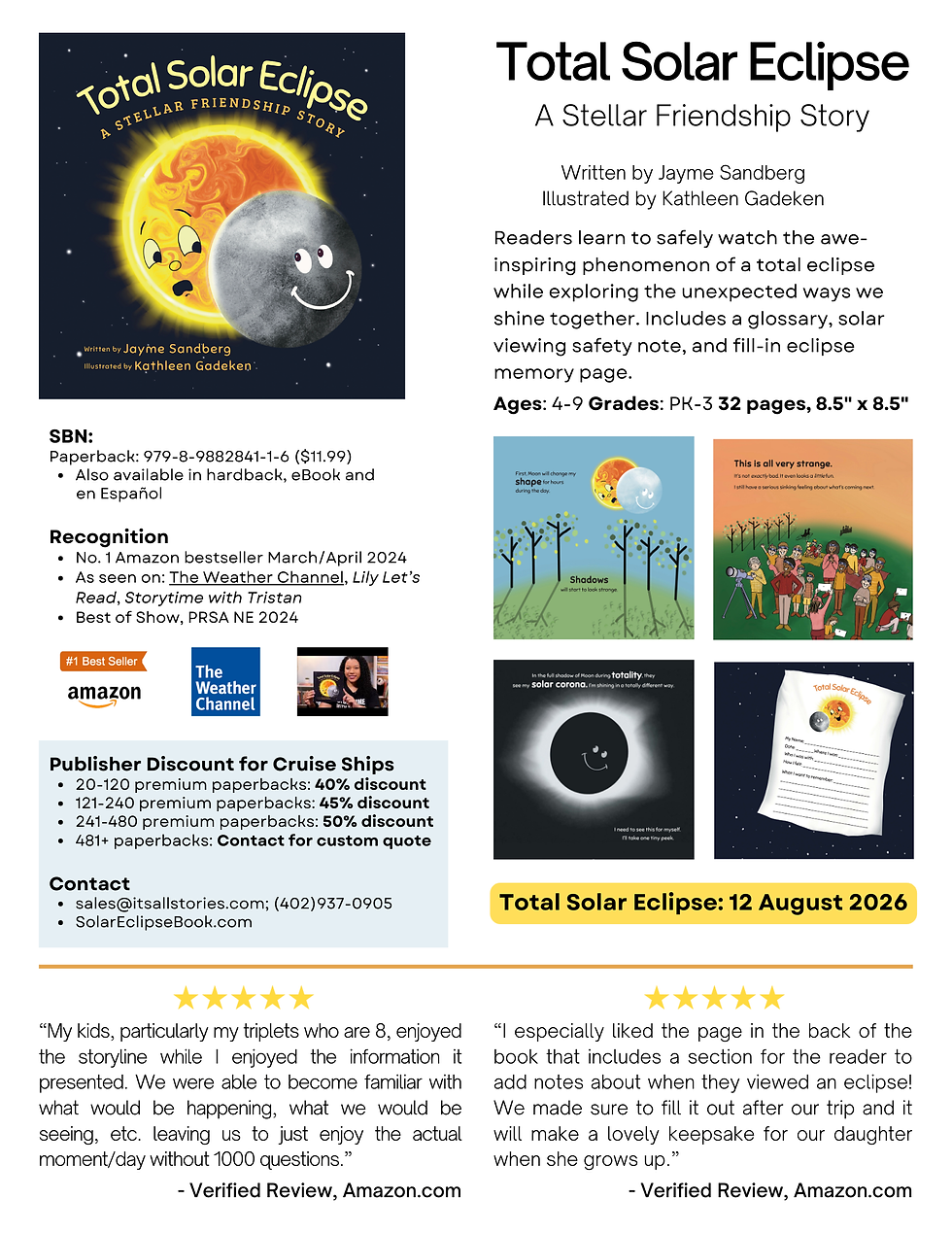Where can I buy solar eclipse glasses
- It's All Stories

- Oct 5, 2023
- 3 min read

The next solar eclipse is right around the corner and one crucial accessory you'll need to take part in the action is a pair of solar eclipse viewing glasses, or another approved filter or method for solar viewing.
With a pair of special eclipses on the horizon on Oct. 14, 2023, and April 8, 2024, it’s easy to get confused about what kind of solar viewers you need and when you need to use them. It’s paramount that you know the guidelines for the eclipse you’re watching and the location you’re watching it from. You must follow the rules to protect your own eyes and set a good example for others.
Here are some answers to frequently asked questions about how to view an eclipse and how to protect your eyes during a solar eclipse.
Why do I need solar eclipse glasses?
The most crucial reason for using solar eclipse viewing glasses is to protect your eyes. Staring at the Sun during an eclipse without proper protection can cause permanent damage, including solar retinopathy, which can lead to blindness. Even a brief moment of unprotected viewing can cause severe eye damage.
Where can I get solar eclipse viewing glasses?
Online Retailers: Leading e-commerce platforms like Amazon have a variety of reputable sellers offering solar eclipse glasses. Look for those with positive reviews and certified eclipse glasses that meet ISO 12312-2 safety standards. A couple of verified direct vendors we like are www.EclipseGlasses.com by American Paper Optics (they created the limited edition ones for Total Solar Eclipse: A Stellar Friendship Story), and www.eclipse2024.org.
Public Libraries: Thousands of public libraries have eclipse glasses to give away for the eclipses on Oct. 14, 2023, and April 8, 2024, thanks to the Solar Eclipse Activities for Libraries (SEAL) program which has distributed more than 4.3 million glasses to more than 12,500 U.S. library locations. Check your local library for availability.
Science Centers: Some science centers may distribute free or low-cost eclipse glasses leading up to a solar eclipse. For example, in Southeastern Nebraska, you can get free eclipse glasses with your admission ticket to the Strategic Air Command & Aerospace Museum on October 14, 2023. Check with your local museums for availability.
Astronomy Stores: Local astronomy shops or planetariums are excellent places to find solar eclipse viewing glasses. They typically carry high-quality, certified glasses that meet safety requirements.

Will sunglasses work?
No! Eclipse glasses are different than regular sunglasses or tinted glasses. Genuine eclipse glasses must meet the ISO 12312-2 international safety standard, which determines the specific criteria for safe eclipse viewing. ISO 12312-2 certified eclipse glasses have specially designed filters that block harmful solar radiation, allowing you to view the Sun safely. Using homemade or uncertified alternatives can be extremely dangerous.
How do I know if my eclipse glasses are safe?
Unfortunately, counterfeit or uncertified eclipse glasses have been sold in the past. Only purchase glasses through reputable vendors you trust and verify their credibility online.
Always verify the product's safety certification by looking for the ISO certification label on the glasses. Also be sure to look them over for any scratches, defects or other signs of damage.
When can I take my solar eclipse glasses off during a partial solar eclipse to look at the Sun?
Never! During a partial solar eclipse, the Moon never fully blocks the Sun’s bright light like it does for up to a few minutes during a total solar eclipse. You always need a solar filter like solar eclipse viewing glasses to see a partial solar eclipse and also a type of solar eclipse called an annular solar eclipse to protect your eyes. Even a few seconds looking up at our brightest star without a certified solar viewing filter can do serious damage to your eyes.
If you’re lucky enough to be in the path of totality during a special eclipse called a total solar eclipse, like the one coming to North American on April 8, 2024, you can take your eclipse viewers off only when you can no longer see any of Sun’s bright disk when looking through them. Totality—when the Moon completely blocks the Sun’s bright light—only lasts for up to a few minutes at most. The second the Sun’s disk comes back into view, the viewers need to go back on.
It’s tempting to try to watch a few seconds longer after totality, but you must resist! In the days following the “Great American Eclipse of 2017” Google searches relating to “eye damage” soared. Don’t let that be you!
Be prepared, protect your eyes, and enjoy the wonder of a solar eclipse!
We’ve created a special solar eclipse viewing safety pledge to help the youngest eclipse watchers prepare for the exciting events. Download it for free here.





Comments